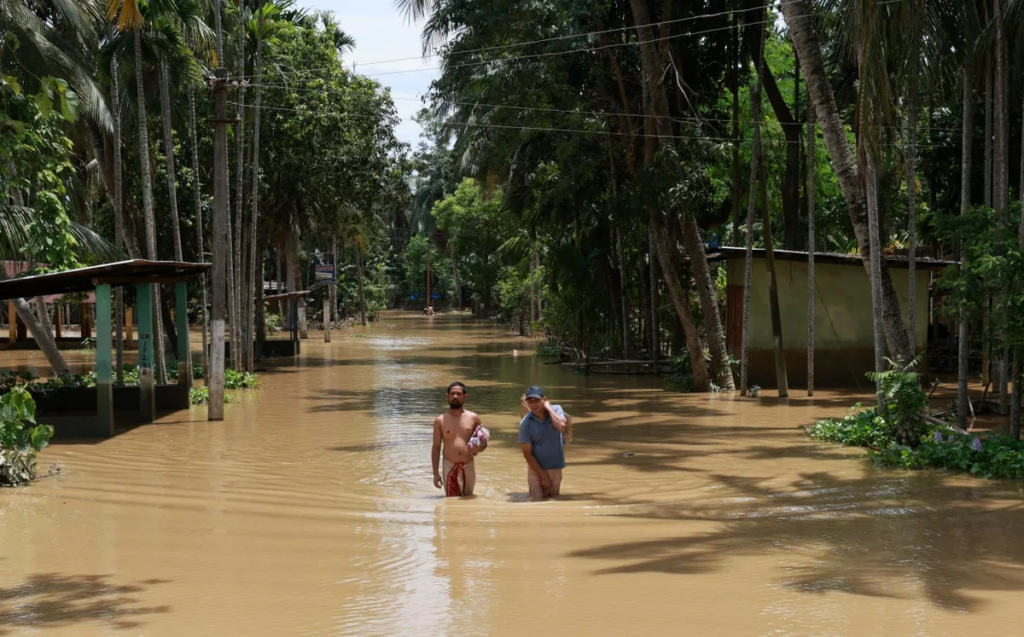
Ten people have lost their lives due to the massive floods in Tripura, including a 12-year-old girl. Over 34,000 people have been forced to leave their homes and live in relief camps. The flood situation worsens, with heavy rainfall continuing and rivers overflowing. The floods affect multiple states in northeast India, including Tripura, Assam, Meghalaya, and Sikkim.
Tripura, a state in northeastern India, is facing one of its worst flood situations in decades due to relentless heavy rains. The floods in Tripura, which began earlier this week, have claimed the lives of 10 people, including a 12-year-old girl. The most affected areas are in South Tripura, Gomati, and Khowai districts.
More than 34,000 people have been forced to leave their homes. Over 6,600 families taking refuge in camps set up across eight districts. The government is providing rescue and relief efforts to the affected people, including providing food, shelter, and medical assistance.
The floods have also caused significant damage, destroying over 1,000 houses and leaving several people missing. The current floods in Tripura are being described as the worst in the state in over 30 years.
In response to the disaster, Chief Minister Manik Saha spoke with Union Home Minister Amit Shah to request additional personnel from the National Disaster Response Force (NDRF) to assist in rescue operations. The Assam Rifles, a paramilitary force, has also deployed four units to help rescue those stranded by the floods.

Infrastructure Is Drowned
The continuous rainfall has led to landslides and drowning incidents. It resulted in at least nine more deaths in the past 48 hours. Moreover, schools and Tripura University have suspended classes as the situation is expected to worsen, with more rain predicted in the coming days.
The floods have also disrupted transportation. The Northeast Frontier Railways (NFR) had to cancel 10 local trains after the heavy rains damaged tracks in the Gomati district.
This severe weather is linked to a low-pressure system over Bangladesh, which is moving westward into northeastern India. The same system has also caused significant flooding in Bangladesh. The flood affected nearly 3 million people and isolated several regions due to impassable roads.
As the situation unfolds, authorities continue to monitor the weather and provide support to those affected by the devastating floods.

